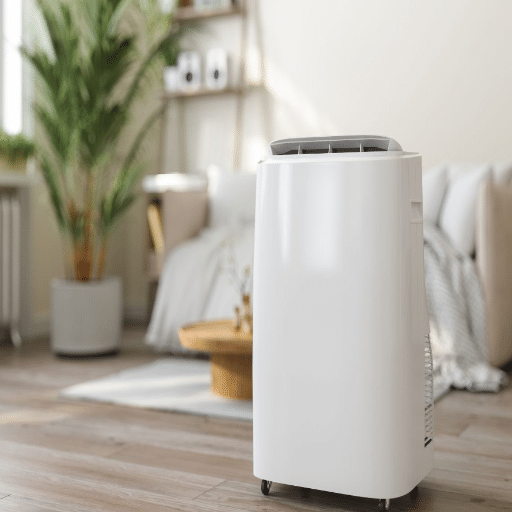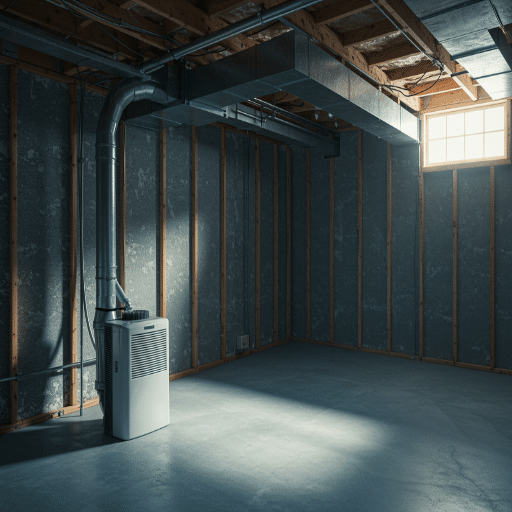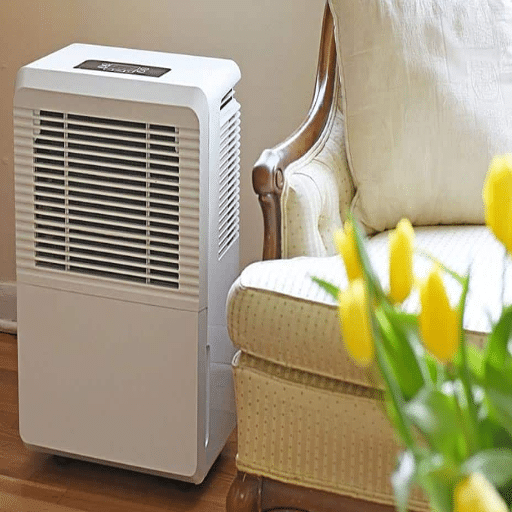Indoor air quality plays a crucial role in maintaining a healthy and comfortable living environment, and controlling indoor humidity is a key factor in achieving this balance. Whole-house dehumidifiers, when properly ducted, offer an efficient solution for managing excess moisture across your entire home. This article serves as a comprehensive guide to understanding the installation process, exploring the various benefits of whole-house dehumidifier systems, and detailing the maintenance required to ensure optimal performance. Whether you’re a homeowner looking to improve air quality or a professional seeking technical insights, this resource will equip you with the essential knowledge to make informed decisions regarding whole-house dehumidifier ducting.
Understanding Whole House Dehumidifiers
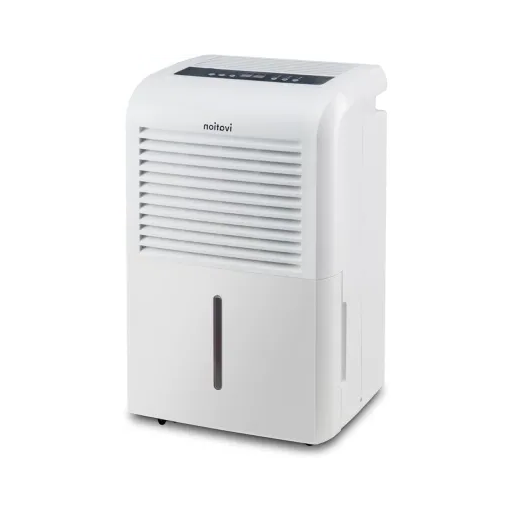
What is a Whole House Dehumidifier?
A whole-house dehumidifier is an advanced appliance designed to control and remove excessive moisture from the air of an entire home. Unlike portable dehumidifiers that serve single rooms or small areas, the whole-house kind integrates with the home’s HVAC system and treats the air as it travels up and down the ducts. By keeping relative humidity at acceptable levels, usually between 30 and 50 per cent, it aids in creating comfortable and healthy surroundings indoors.
Mainly, whole-house dehumidifiers protect against the buildup of molds, mildews, and dust mites, all of which need moist conditions to survive. Higher humidity levels also aggravate allergies, respiratory ailments, and other health issues, thus making humidity regulation necessary for such humid regions. In addition, by reducing unwanted humidity, these systems help to protect a home from shrinkage of wood, peeling, and other moisture-related damage.
Lowering humidity rates is only one aspect of how these systems help improve energy efficiency; another is by lessening the demand on air conditioning systems. Humid air can feel warmer, meaning the demand for cooling rises as a consequence. Once the system removes the moisture, the cooling equipment can cool more effectively, cutting energy consumption and costs. These systems are considered to be an all-encompassing answer for efficient long-term moisture control.
Benefits of Whole House Dehumidification
- Better Indoor Air Quality: Excess moisture in the home would foster an environment suitable for mold, mildew, and dust mites, all of which create adverse effects for the indoor air quality. To keep these allergens in check, a whole-house dehumidifier regulates humidity, which ends up bringing about healthier air for the occupants. The Environmental Protection Agency (EPA) recommends keeping indoor humidity between 30% and 50%, which greatly reduces the prevalence of these harmful contaminants.
- Enhancing Comfort: Increased humidity can also make it feel warmer, thus creating discomfort and stickiness. Whole-house dehumidifiers maintain optimum humidity levels, thus ensuring the living space is comfortably cool throughout the year without resorting to over-lowering the thermostat.
- Energy Efficiency and Cost Savings: Once the septic moisture is decreased, the HVAC would not have to work uphill to cool the space. Such efficiency results in lower energy consumption and, thereby, lower utility bills. Studies have revealed that energy consumption can be lessened by 15% in normal residential buildings once proper control of relative humidity is attained.
- Preservation of Structures in the Home: Increased humidity is damaging to the structural aspect, with time-warping wood, peeling paint, or staining drywall or insulation. Whole-house dehumidification protects the vital structural elements of the home, thereby extending their lifespan, which would keep homeowners out of frequent repairs.
- Helping with Preservation of Personal Belongings: Excessive upkeep of humidity would oppose the very survival and deterioration of furniture, electronics, books, and clothing. The whole house dehumidifier, by controlling moisture, ensures the preservation of these valuable possessions that would otherwise fail to stay in good shape for an extended period.
How Whole House Dehumidifiers Improve Air Quality
Whole-house dehumidifiers greatly improve indoor air quality while keeping humidity at optimal levels necessary for allergen production. High humidity encourages the growth of mold, mildew, and dust mites-acting allergens on air quality-and their presence worsens respiratory conditions such as asthma and allergy. A dehumidifier can keep these contaminants under control by keeping the moisture level in check, ensuring a healthier home environment.
Moreover, from an air quality standpoint, they also improve ventilation efficiency. Excessive humidity often disrupts airflow in the HVAC system, creating recirculating air flows and pools of airborne particles. Thus, a whole-house dehumidifier ensures the humidity levels are kept at an optimum level, allowing the HVAC system to operate better and making sure indoor pollutants are removed on a continuous basis. The result is fresher and cleaner air that circulates throughout the home.
Finally, whole-house dehumidifiers improve air quality by discouraging potential sources of musty odors, best attributed to damp interiors. Such odors typically arise from microbe populations fed by excessive humidity. By preventing this proliferation, these systems maintain a neutral and comfortable indoor ambiance free from offensively stale odors. Their whole approach to moisture control not only optimizes air quality but also ensures the structural integrity of the home and furnishes considerable health benefits.
Importance of Proper Ducting

Role of Ducting in Dehumidifier Performance
The design and installation of a ducting system have serious implications for the performance and effectiveness of a dehumidifier. Ducting is set to draw air in, condition it, and send it forth so the dehumidifier can work to maximum capacity. Poorly designed ducts, or even worse, ones that are not properly sealed, can leak air, thus lowering airflow efficiency and raising energy consumption. Studies have shown that leaks within the duct systems reduce the efficiency of HVAC systems by 20-30%, thereby directly hampering the ability of the dehumidifier to maintain sufficient humidity levels.
Besides, the material and size of the ducts impact pressure losses and system resistance. For example, smooth and rigid ducts present less resistance to air movement than flexible or corrugated ones, thus promoting better dehumidification. Try keeping the ducts short and limiting the number of bends to reduce static pressure, hence promoting an unrestricted path for the air to flow and maximum effectiveness.
Hence, more advanced dehumidifiers with sensor-based controls can capitalize upon efficient ductwork by dynamically changing fan speeds in response to current humidity levels. So good ducting will assure that a dehumidifier can give out its best performance and assure uniform control of humidity inside the space, creating solutions that can be scaled from the residential to industrial level.
Even Air Distribution with Ducted Dehumidifiers
Even air distribution is vital to ensure uniform humidity control by duct dehumidifier systems. These systems depend upon specifically designed ductwork to provide conditioned air evenly through the room and thus avoid localized pockets of high humidity. Unbalanced air distribution leads to inefficiencies like mold building in those poorly ventilated areas or energy wastage.
Increasingly, CFD modeling helps stereotypes better air distribution. CFD allows for the precise simulation of the airflow in a particular area, thus helping engineers optimize duct layout and consider the impact of various parameters like fan speed and air pressure. If presented together with efficient air diffusers, the treated air is distributed evenly, with stable temperature and humidity gradients inside the space.
New attempts have revealed that the norm of a VAV-equipped ducted dehumidifier can be enhanced even further in terms of air distribution. VAV systems vary flow rates according to actual room conditions, saving energy by 30% compared to fixed-rate systems. When VAV-based ducted dehumidification systems are used with humidity sensors and automatic dampers, optimum conditions can be more precisely maintained for both comfort and efficiency.
Direct adjustments made to the size and location of ducts, coupled with advanced air control tech, can drastically improve air distribution in applications ranging from home installations to large industrial buildings.
Whole House Dehumidifier Installation Process
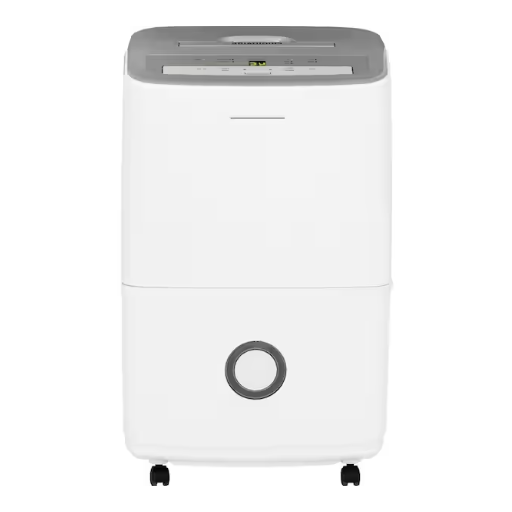
Key Considerations Before Installation
There are important considerations before installation to ensure good functioning and efficiency. Firstly, carry out a detailed load calculation determining the required dehumidifier capacity. This includes evaluation factors such as the house’s square footage, the level of insulation, and existing ventilation systems, along with usual humidity levels for the area. Proper sizing will protect from underperforming or excessive power consumption.
Next, inspect the denoted HVAC ductwork to verify that it will work with the dehumidifier. On checking, look for any air leaks, unbalanced pressure, or blockages that might become a hindrance to the operational efficiency of the system. It is believed that ducts should be sealed and insulated to avoid thermal loss and condensation that can foster the growth of microorganisms.
Electrical considerations are involved in the planning stage, making sure the area has enough power supply with proper circuit protection as per the manufacturer’s specifications. Meanwhile, check possible drainage options for continuous removal, thus preventing structural damage to the surrounding areas and system inefficiency due to poor condensate disposal.
Recommendation-wise, another consideration is the use of smart controls or humidity monitoring sensors along with the dehumidifier, allowing for precise adjustment to prevailing real-time conditions, thus enhancing performance while ensuring indoor air quality under controlled situations. Preparing for these activities will ensure that the system’s reliability, projected lifespan, and installation standards will be met.
Compatibility with Existing HVAC Systems
First, compatibility between the dehumidifier and the existing HVAC system must be verified to ensure optimum performance. From there, the integration must evaluate some of the key factors, such as the size of the system, ductwork layout, and air quantity. A good load calculation will indicate the correct capacity of the available space and whether it aligns with the specifications of the HVAC. A more or less sized unit will aggravate inefficiency in humidity control or cause the system to be overloaded.
Also important is an evaluation of the duct layout to ensure that the dehumidifier is not obstructing airflow in one way or another. This could involve assessing the position of air returns as well as supply vents to achieve the best possible humidity extraction from the given area. Further consideration of compatibility includes an assessment of the electrical requirements. Mismatched voltage or circuit capacity could hinder both the safety and operation of the system. Control upgrades may need to be considered, synchronizing dehumidifier operation with the HVAC system to work together for enhanced indoor air quality and energy efficiency.
By considering the above factors and properly evaluating the system, the homeowner or contractor will guarantee that an added dehumidifier will support and enhance the performance of the HVAC system rather than cause it to encounter operating difficulties.
Steps to Install a Whole House Dehumidifier
- Evaluate System Requirements: Begin by considering your home’s specific requirements, among which include square footage, HVAC system’s capacity level, and present humidity levels. Use a hygrometer to take that baseline, since ideally, an efficient dehumidifier should be able to keep the indoor humidity at anywhere between 30 and 50 percent.
- Pick the Dehumidifier: Select the whole-house dehumidifier according to an evaluation of your home’s needs. Ensure the dehumidifier would work hand-in-hand with your HVAC system and one that could deal with the volume of air circulation being fed through.
- Locate the Place for Installation: Place the dehumidifier near the air handler or furnace for good contrast with the HVAC system. A location must be provided with ventilation and made accessible to carry out maintenance works such as filter replacement, drainage line clearing, etc.
- Connecting the Dehumidifier with an HVAC System: Integrate the dehumidifier into the existing HVAC system using a duct. Usually, the supply-side connection is suggested, placed typically upstream before the return plenum to maximize the air circulation and humidity control. All duct joints must be sealed to avoid leaks that would otherwise take away from the system’s efficiency.
- Set-Up Drainage System: The drainage system must be adequately configured to drain practically condensed water from the dehumidifier, either with or without a gravity drain or a condensate pump, with the drain line ideally to be directed to a floor drain, sump pump, or the surface level outside. The line must be properly sloped and clear of any obstruction to prevent water backup.
- Install Electrical Wiring: Generally, the dehumidifier must be connected to a power circuit, which is separate from other circuits. Follow local electrical codes. Make sure that an electrician is called for assistance to avoid any improper wiring formation. Some models may require low-voltage wiring so that the dehumidifier operation can be coordinated with the thermostat or other HVAC controls.
- Final Controls Setup and Testing: Usually, it is the setting of aimed humidity that will optimize outcomes during final run-ups and control system settings. Typical tests include running the dehumidifier with the HVAC system and checking for air leakage, strange noise, and uneven airflow; confirm that the system removes excess moisture and maintainsa stable interior temperature.
- Maintain Periodically: Periodic service is essential for long-term performance. This means cleaning or replacing air filters, inspecting the ductwork for any blockage, and keeping the drain pipes clear. Make regular inspections to fix forecast problems and optimize system life.
Once all this is followed stepwise, homeowners and contractors will be assured of a meticulous and effective installation that improves indoor air quality and extends the durability of the HVAC system.
Avoiding Common Installation Mistakes
Incorrect Placement of Dehumidifier
The positioning of a dehumidifier determines, to a great extent, its efficiency and effectiveness. One common error is to install the unit in a location that may prevent airflow, such as in enclosed corners, closets, or generally poorly ventilated areas. Dehumidifiers need good airflow for their best working condition: restricted air movement means not only a loss of ability to remove moisture but also additional strain on the equipment over the years. For those who try to place a dehumidifier too much inside walls or furniture near the air intakes or exhaust, that would block some of the functioning.
In addition, putting the unit on uneven surfaces may cause it to be unstable during the operation, leading to damage to the internal components and, in due course, shortening the lifespan of the unit. Another common mistake would be to place the device in areas where moisture buildup is rare enough to threaten the usefulness of the device, such as in dry basements. Dehumidifiers, therefore, should be placed in locations where there is a high concentration of moisture, such as in damp basements, laundry rooms, or other areas prone to mechanical condensation. In short, allow at least 12-18 inches of clearance around the dehumidifier and locate it near the center of the area to be covered.
Indoor air quality data put the improper placement behind a loss in moisture extraction efficiency in the order of 30 percent. If the newer units are equipped with a hygrometer, they should also be kept away from other sources of heat, such as radiators or ovens, to ensure accurate humidity measurements. Eliminating these errors will considerably decrease inefficiencies and permit better control of the indoor environment.
Failing to Assess Humidity Levels
The building infrastructure and the health of the occupants will suffer if humidity levels are not properly measured and controlled. For example, high humidity aids the development of mold and mildew that can permeate the building materials like drywall and wood, thus having stood their test of time. Contrarily, very low humidity dries up and cracks building materials such as wood flooring and furniture, thereby somewhat affecting their longevity and aesthetic value.
In terms of health, more humidity leads to dust mites and mold spores proliferating; these spores serve as some of the common allergens and can worsen the symptoms of respiratory ailments, for example, asthma. Less humidity causes drying up of the skin, eyes, and respiratory tract, and can be severely uncomfortable or even hazardous to those present inside. Technologically advanced humidity control systems like the latest humidifiers and dehumidifiers, including modern and integrated HVAC solutions, allow precise control to regulate the ideal level of indoor relative humidity between 30% 50%.
Such an optimally maintained humidity level not only allows for comfort but also enhances energy efficiency. A building that maintains its relative humidity requires less heating during winter and less cooling during the summer; so goes the opposite, increasing energy consumption. Periodic recording using hygrometers and the interjection of automated monitoring systems to assure long-term stability and fortify humankind management effectively concerning humidity in any climate.
Maintenance Tips for Your Dehumidifier
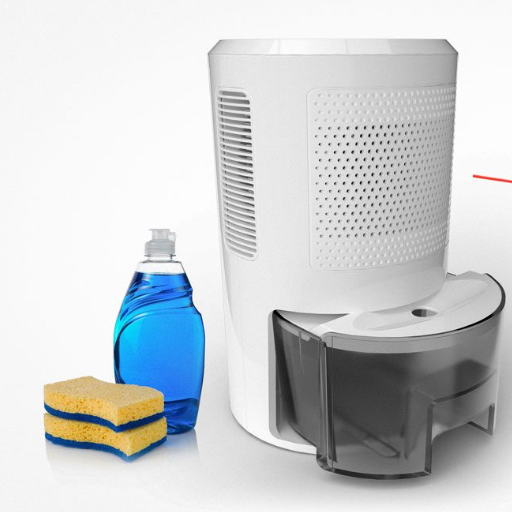
Regular Cleaning and Filter Checks
While proper operation and longevity of a dehumidifier require maintaining the device, the most important thing to remember is to keep the device clean. Dust, dirt, and mold can settle on the outer and inner parts, which can diminish the unit’s effectiveness and act as contaminants. First, remember to unplug the device and wipe down its exterior with a damp cloth. In cleaning the inside, be sure to periodically rinse and disinfect the water tank to prevent mold or bacteria from forming. Disinfect the tank with a mild solution of water and white vinegar to ensure that the disinfecting process is thorough and that no damage will be done to the tank.
The air filter is another important aspect of a dehumidifier that requires frequent cleaning. They filter air particles such as dust, pollen, and pet dander to circulate relatively cleaner air. These, however, can get clogged over a period of time, thereby restricting the flow of air and making the system less efficient. Manufacturer recommendations suggest the filter should be checked every two weeks, although those in very dusty environments may have to do so more frequently. Washable filters must be rinsed with lukewarm running water and should be completely dry before reinsertion. For non-washable or replaceable filters, check the manufacturer’s recommendations for replacement intervals.
In addition, you must check the coils and blades of your fan to ensure maximum performance. The build-up of dirt on your evaporator or condenser coils will hinder heat exchange from occurring properly, thus reducing its ability to remove humidity from the air. Clean all of these with a soft brush or vacuum cleaner with a brush attachment. Keep an eye on the fan efficiency, too; if the blades are coated in grubby dirt, their movement will be obstructed and put undue strain on the motor. In effect, taking care of the dehumidifier through maintenance will maintain the device’s good performance, reduce energy consumption, and thus save on operational cost, making it a money-worthy investment in the long run.
Scheduling Inspections for Longevity
Scheduled inspections are vital in extending the operational life and maintaining functional efficiency of any dehumidifier. Ideally, a trained service provider should inspect the equipment once per year; however, frequency should increase with more intense use. The inspection checks that each component functions as intended, including the essential elements, such as the filter system, cooling coils, and condensate drain line. Technicians may be capable of spotting nascent signs of wear or inefficiency that remain hidden to the untrained eye, thereby correcting the problem before it develops into costly repairs or replacements.
Through these inspections, overall operational efficiency may be used as a yardstick against which to measure potential deviations so that ad hoc adjustments may be made to day-to-day operations. For example, output capacity is measured against rated efficiency to determine if the machine is behaving as anticipated. Whenever performance measures indicate a deviation from expected values, it becomes an indicator to check for problems such as air blockage, refrigerant leaks, or outdated electronic controls requiring calibration or replacement. Some contemporary dehumidifiers combine smart diagnostic feedback with professional inspections for a truly exhaustive health assessment of the system.
Finally, by scheduling their inspections among other maintenance tasks, sustainability and cost can be managed over time. Inspections reduce the opportunity of unplanned breakdowns that may lead to moisture damage in the setting that the unit is designed to protect by bringing possible mechanical issues into light. They maximize energy efficiency, too, for an efficient dehumidifier will consume the least amount of power. Liaising with HVAC service professionals for such inspections further ensures the longevity of your device, in turn reinforcing it as a worthy investment to maintain indoor air quality and stave off structural degradation.
Signs Your Dehumidifier Needs Maintenance
Early identification of any sign of malfunction in a dehumidifier could avert further damage and ensure its continued operation. Generally, early indicators include a decreased ability to extract water. If the unit is running but, under normal humidity levels, is not collecting a sufficient amount of water in the reservoir, there may be clogged air filters, a defective compressor, or refrigerant-related issues. Changing noise levels, from grinding to rattling, are often signals of internal mechanical wear or of parts being loose.
Another red flag would be the failure of the dehumidifier to power on or shut off during operation irregularly. It could be due to electrical issues, defects in the control board, or sensor failures. Excessive heat being released into the environment or error codes displayed persistently might indicate overheating or serious electrical problems that need an expert’s attention.
Finally, if the device is sending out unpleasant odors or there is visible mold inside the unit, this is an indication that the unit has not been well-maintained and may have internal contamination. Well-maintained, clean units, undergone routine inspection and timely servicing, not only solve these problems but also keep the device from becoming an issue in indoor air quality. Once cleaned and serviced, it ensures peak energy efficiency in the use of the appliance, hence lowering electricity costs.
References
-
Investigation of Energy Impacts of Ducted Dehumidifier Duct
This study discusses the design and energy impacts of ducted dehumidifiers, often referred to as whole-house dehumidifiers. -
Energy and Latent Performance Impacts from Four Different Dehumidifiers
This paper explores the performance of ducted and unducted dehumidifiers, focusing on energy and latent performance. -
Development of an Integrated Residential Heating and Dehumidification System
This research examines the dehumidification performance of residential systems, including ducted setups. -
Whole-Home Dehumidifiers: Field-Monitoring Study
This field study provides insights into the operation of whole-home dehumidifiers, including ducting configurations. -
Dehumidifiers Key Efficiency Criteria (ENERGY STAR)
This page outlines the efficiency criteria for ducted dehumidifiers, including their design and installation.
Frequently Asked Questions (FAQ)
Q: What is a whole-house dehumidifier ducting system?
A: A whole-house dehumidifier ducting system is designed to remove excess moisture from the air throughout your home using ductwork connected to your HVAC system. This system ensures that dehumidified air is distributed evenly, improving indoor air quality and comfort.
Q: How do I install a whole-house dehumidifier?
A: To install a whole-house dehumidifier, you should first assess your existing HVAC system and the size of your home. Professional installation is recommended to ensure proper ducting and integration with the air conditioning system. An HVAC technician can guide you through the installation process.
Q: What are the installation costs for a whole-house dehumidifier?
A: Installation costs for a whole-house dehumidifier can vary based on the type of dehumidifier, the complexity of the ducting, and the labor fees of HVAC contractors. On average, you can expect to pay between $1,200 and $2,500, including the cost of the unit and installation.
Q: How does a whole-house dehumidifier improve air quality?
A: A whole-house dehumidifier improves air quality by controlling humidity levels in your home, reducing moisture levels that can lead to mold and mildew growth. This results in drier air, which enhances indoor air quality and comfort.
Q: Can I use an air conditioner instead of a dehumidifier?
A: While air conditioning units can help control humidity, they are not as effective as dedicated dehumidifier systems. A whole-house dehumidifier is specifically designed to remove excess moisture, making it a better option for humid climates.
Q: What happens if I don’t have a whole-house dehumidifier?
A: Without a whole-house dehumidifier, high humidity levels can lead to discomfort, damage to your home, and poor indoor air quality. Excess moisture in the air can promote mold growth and negatively affect health.
Q: What type of dehumidifier is best for my home?
A: The best type of dehumidifier depends on factors like the size of your home and the amount of moisture in the air. Whole-house dehumidifiers are ideal for larger homes, while portable units may suffice for smaller spaces.
Q: How does ducting affect the efficiency of a whole-house dehumidifier?
A: Proper ducting is crucial for the efficiency of a whole-house dehumidifier. Well-designed ductwork ensures that dehumidified air is effectively distributed throughout the house, maintaining consistent humidity levels and improving the overall performance of the HVAC system.
Q: What maintenance is required for a whole-house dehumidifier?
A: Maintenance for a whole-house dehumidifier includes regularly checking and replacing air filters, inspecting the ductwork for leaks, and ensuring the dehumidifier unit is functioning properly. Regular maintenance helps prolong the life of the unit and maintains efficient operation.
Q: How can I tell if I need a dehumidifier?
A: Signs that you need a dehumidifier include persistent dampness, musty odors, visible mold growth, and condensation on windows. If you live in a humid climate and experience high humidity levels in your home, a whole-house dehumidifier can significantly improve your indoor environment.


